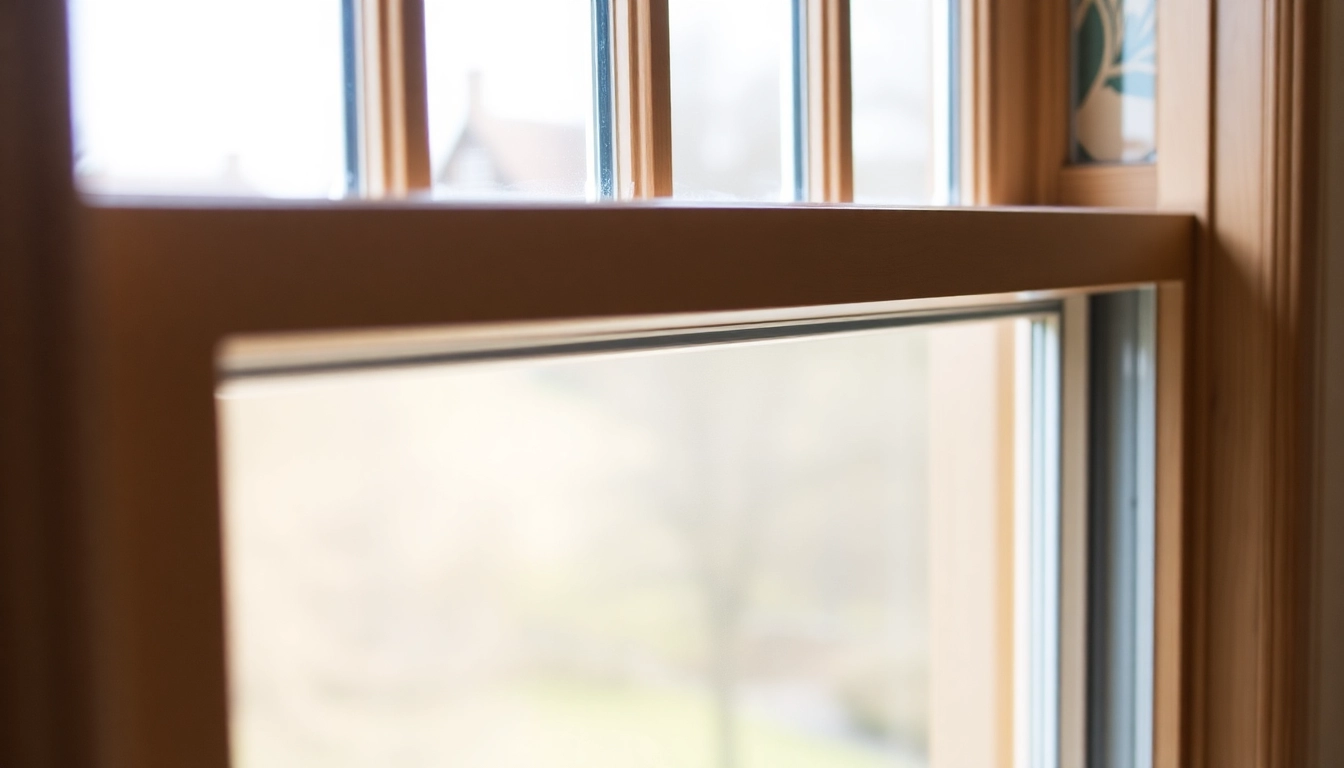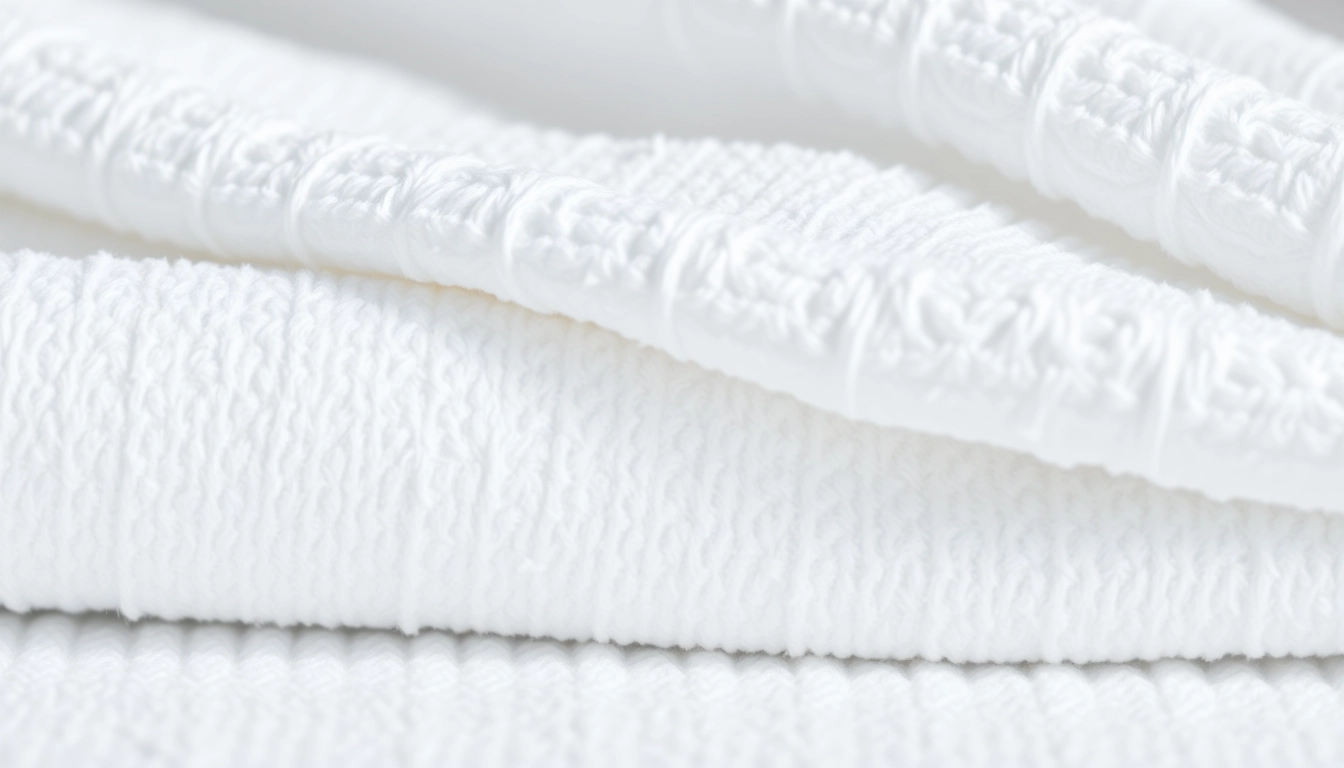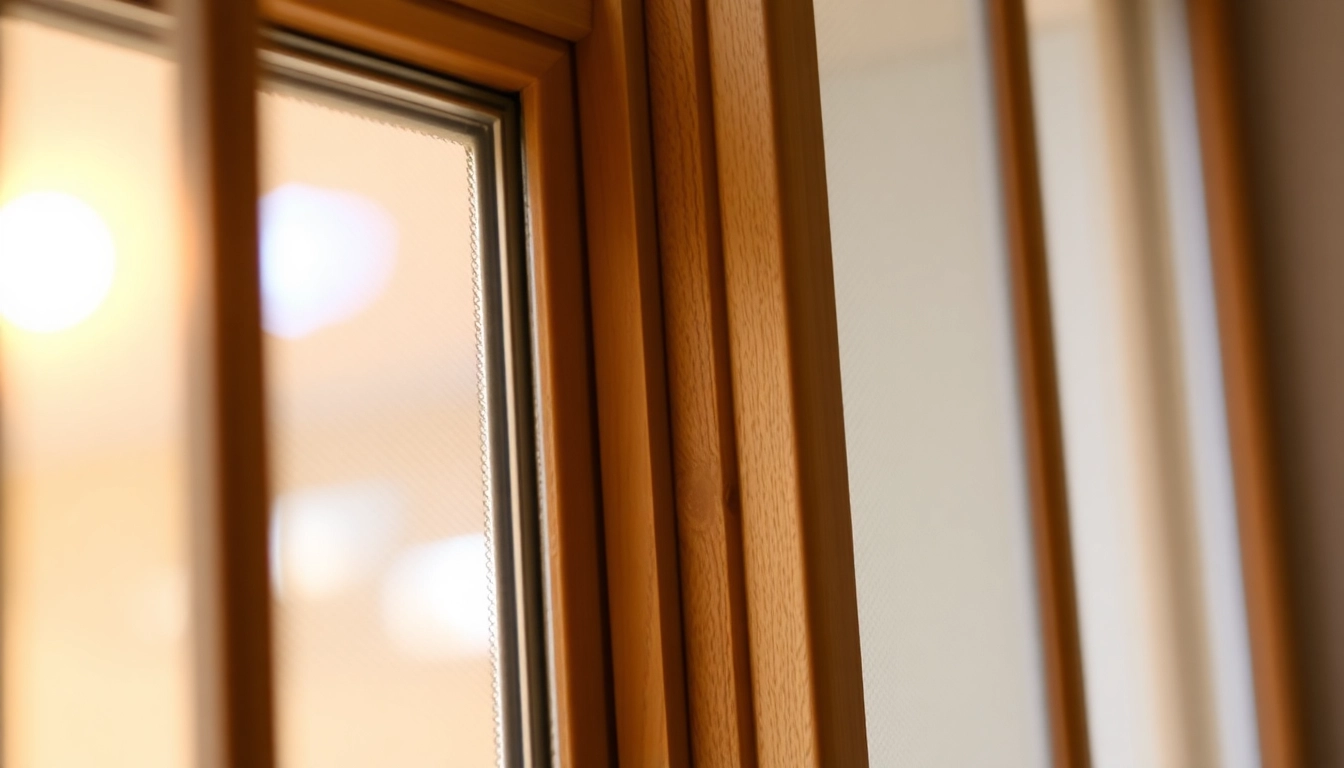Understanding Secondary Glazing for Sash Windows
Secondary glazing for sash windows has become an increasingly popular solution for homeowners and property managers seeking to improve their buildings’ thermal efficiency, reduce noise pollution, and preserve the aesthetic integrity of traditional architecture. Unlike double glazing, which involves replacing existing windows with new units, secondary glazing is a discreet, cost-effective retrofit that installs an additional pane of glass or acrylic on the interior side of existing sash windows. This approach offers numerous benefits, especially for historical and listed buildings where preserving original features is essential. To fully appreciate the value and suitability of secondary glazing for sash windows, it’s important to understand how it works, the materials available, and the key considerations involved in choosing and installing this technology. For more detailed options specific to your property, visit Secondary glazing for sash windows.
What Is Secondary Glazing and How Does It Work?
Secondary glazing is a method of adding an extra window layer inside the original sash window, creating a new barrier that enhances insulation and acoustic performance. This secondary pane can be fixed, sliding, or magnetic, depending on the preference and architecture. It essentially acts as an additional shield that traps air between the panes, significantly reducing heat transfer and sound infiltration. The installation is straightforward; the secondary unit is mounted on the inside frame of the existing sash window, often using a minimalistic frame or track system that maintains the window’s aesthetic and functional integrity.
This system works by creating an insulating gap, typically between 100 to 200 millimeters, which minimizes heat loss through conduction and convection. From a soundproofing perspective, the additional barrier disrupts sound waves, with reductions of up to 51dB reported in some cases, making homes markedly quieter. Unlike replacing original sash windows with uPVC or other modern materials, secondary glazing retains the character and historical value of the property, making it a preferred solution in conservation areas.
Benefits of Installing Secondary Glazing on Sash Windows
- Enhanced Thermal Insulation: Secondary glazing significantly reduces heat loss, helping to lower energy bills and increase indoor comfort without modifying the original sash windows.
- Superior Soundproofing: By creating an extra acoustic barrier, secondary glazing reduces noise pollution from traffic, neighbors, or nearby commercial activities, resulting in a more peaceful living environment.
- Preservation of Aesthetic and Historical Features: Since it’s an internal solution, secondary glazing maintains the original sash window design, which is vital for heritage buildings and conservation areas.
- Cost-Effectiveness: Compared to full window replacement, secondary glazing is generally less expensive and faster to install, offering excellent value for both owners and tenants.
- Ease of Installation and Maintenance: Installation can often be completed within a day, and secondary panels are easy to clean and maintain, extending their lifespan with minimal effort.
- Flexibility and Customization: Available in various materials and configurations, secondary glazing can be tailored to specific needs—whether for large sash windows, windows with shutters, or unique architectural features.
Many property owners find that secondary glazing offers an ideal balance of preserving historic charm while upgrading interior comfort, ultimately boosting property value and livability.
Materials and Types of Secondary Glazing Suitable for Sash Windows
Choosing the right material for secondary glazing is critical to achieving optimal performance while maintaining aesthetic harmony. The most common options include aluminum, uPVC, acrylic Perspex, and polycarbonate, each with distinct advantages and considerations.
Aluminum Secondary Glazing
Aluminum is prized for its durability, slim profile, and minimal maintenance. Aluminum secondary glazing units can be handcrafted to fit the precise dimensions of sash windows and are often powder-coated for corrosion resistance. They provide a sophisticated, discreet appearance and can be painted to match existing window frames. Handcrafted aluminum secondary glazing is particularly suitable for heritage buildings because of its high aesthetic compatibility and robustness.
Acrylic Perspex and Polycarbonate
These synthetic materials are lightweight, shatter-resistant, and generally cheaper than glass. Acrylic Perspex provides excellent optical clarity, UV resistance, and ease of installation, making it popular among DIY enthusiasts. Polycarbonate, on the other hand, offers superior impact resistance, ideal for situations where safety is paramount or external secondary glazing is considered.
Glass vs Acrylic
While traditional glass remains a popular choice for secondary glazing, acrylic and polycarbonate options are gaining popularity due to their lighter weight and ease of handling. Modern polycarbonate and acrylic sheets can be cut precisely and fitted with magnetic or track systems, offering a seamless appearance and high performance. The choice often depends on cost, installation preferences, and whether the secondary glazing is internal or external.
Types of Secondary Glazing
- Fixed Panels: Permanently attached, offering superior insulation but less flexibility.
- Sliding Systems: Allow easy access to the original sash windows for cleaning and operation; common in vertical sliding sash windows.
- Magnetic Units: Feature magnetic edges that secure the secondary pane in place, suitable for DIY installation and temporary setups.
- Lift-Out Panels: Can be removed when not needed, ideal for seasonal use or tenants who prefer removable solutions.
Each type serves different needs, from permanent insulation to flexible, temporary shields. Selecting the appropriate option depends on budget, aesthetic preferences, and usability requirements.
Choosing the Right Secondary Glazing Solution
Factors to Consider for Effective Acoustic and Thermal Performance
To optimize secondary glazing’s benefits, it’s essential to evaluate several factors:
- Material Transparency and Optical Clarity: Choose materials with high optical clarity for unobstructed views and light passage.
- Seal Quality and Airtightness: Proper seals prevent drafts, enhance thermal insulation, and improve soundproofing.
- Air Gap Thickness: An optimal gap (usually 100-200mm) maximizes insulation and reduces sound transmission.
- Frame Design and Fit: Secure, custom-fitted frames prevent air leakage and ensure durability under varying climatic conditions.
Combining high-quality materials with precision installation ensures the secondary glazing delivers maximum efficiency in warmth and quietness.
DIY vs Professional Installation: Pros and Cons
Both DIY and professional installation options are viable, depending on skills, budget, and urgency. Here’s a breakdown:
DIY Secondary Glazing
- Advantages: Cost savings, immediate availability of kits, flexibility in scheduling.
- Challenges: Precision fitting, ensuring airtight seals, potential for misalignment, and safety concerns when handling glass or acrylic sheets.
Professional Installation
- Advantages: Expertise ensures optimal fit, professional-grade seals, compliance with safety standards, and preservation of aesthetics.
- Challenges: Higher initial cost, dependence on the availability of qualified installers.
For complex sash windows, heritage buildings, or high-performance requirements, professional installation is generally recommended to guarantee effectiveness and longevity.
Cost Analysis and Long-term Value of Secondary Glazing
Secondary glazing costs in the UK typically range between £200 to £500 per window, depending on the material, design, and complexity of installation. Magnetic kits tend toward the lower end of this spectrum, while bespoke aluminum systems are more expensive but offer superior aesthetics and durability.
Despite upfront costs, secondary glazing offers long-term savings through reduced energy bills—potentially lowering heating costs by up to 20%—and improved living comfort. Additionally, it enhances property value, especially in conservation zones, making it a worthwhile investment.
Comparatively, replacement windows can cost from £1,000 to over £3,000 per window, making secondary glazing a cost-efficient alternative without compromising the building’s historical integrity.
Installation and Maintenance Tips
Preparing Your Sash Windows for Secondary Glazing
Preparation involves cleaning the existing sash windows thoroughly and ensuring they are in good working order with functional locks and hinges. Removing any loose paint or debris around the frame improves unit adhesion. Measuring accurately for the secondary panels is critical—measure the width and height at multiple points to account for any sashes that are not perfectly square.
Step-by-Step Guide to Professional Installation
- Initial Assessment: Measure window recesses carefully and determine the appropriate type of secondary glazing system based on aesthetic, functional, and budget considerations.
- Fabrication of Units: Custom units are crafted to fit your sash window dimensions, often using CAD-designed frames to ensure precision.
- Installation Preparation: Remove any obstructions, and if necessary, temporarily remove sash cords or hardware for a smooth fit.
- Mounting the Secondary Unit: Secure the secondary panels using appropriate brackets, tracks, or magnetic strips, ensuring airtight seals and ease of operation.
- Final Inspection: Check for gaps, proper operation, and aesthetic compatibility. Adjust as needed before confirming installation.
Care and Maintenance to Maximize Longevity
Regular cleaning with a soft cloth and mild detergent keeps the secondary glazing clear and free of dust. For magnetic or track systems, periodic checks and adjustments prevent slippage or misalignment. Sealants and weatherstripping may require replacement over time, especially in exposed climates. Proper maintenance ensures the secondary glazing remains effective for decades, delivering sustained comfort and protection.
Legal Considerations and Historic Preservation
Secondary Glazing on Listed and Heritage Sash Windows
In conservation areas or on listed buildings, installing secondary glazing often requires special permissions. However, because secondary glazing is an internal retrofit, it is generally viewed as a reversible modification that preserves the external appearance of the building. Engaging with local heritage bodies and obtaining necessary consents before installation is crucial to avoid potential legal issues.
Choosing discreet, heritage-compatible materials such as slim-profile aluminum or acrylic can facilitate approval processes and ensure aesthetic harmony with the original architecture.
Building Regulations and Compliance in the UK
Secondary glazing must meet specific building standards related to thermal performance, fire safety, and structural stability. While internal secondary glazing is often exempt from some regulations, compliance with energy efficiency directives and health and safety standards remains important. Consulting with qualified professionals ensures adherence to all relevant UK building codes, avoiding legal complications.
Working with Heritage Councils and Local Authorities
Engaging early with heritage consultancies and local planning authorities can streamline approval processes. Providing detailed project plans, material specifications, and aesthetic considerations demonstrate respect for conservation guidelines and facilitate mutual understanding. Many authorities favor interventions that are reversible and minimally intrusive, aligning with the advantages of secondary glazing.
Finding Local Experts and Getting Quotes
How to Choose a Reliable Secondary Glazing Installer in Bristol
Start by researching companies with proven experience in heritage properties and sash window upgrades. Look for testimonials, case studies, and accreditations from industry bodies like the Glass and Glazing Federation (GGF). Request portfolios of completed projects similar in style and complexity. Ensure your chosen installer offers bespoke solutions, compliance assistance, and aftercare services.
Requesting and Comparing Quotes for Secondary Glazing
Obtain detailed quotes from multiple providers, comparing costs for materials, installation, and warranty coverage. Diligently review each quote to understand what is included—such as window measurements, manufacturing, installation, and post-installation support. Be wary of significantly lower quotes, which may compromise quality or compliance.
Key factors influencing cost include the type of secondary glazing (fixed, sliding, magnetic), material choice, and the number of windows. While DIY kits are available, professional installation is highly recommended for long-term performance and protection of heritage features.
Customer Testimonials and Case Studies
Many clients in Bristol and across the UK have benefited from secondary glazing that preserves their historic sash windows while providing dramatic improvements in comfort and noise reduction. Case studies often highlight how tailored solutions have harmonized with architectural features, maintaining authenticity while enhancing energy efficiency. When selecting an installer, reviewing such feedback can offer valuable insights into quality and customer satisfaction.




